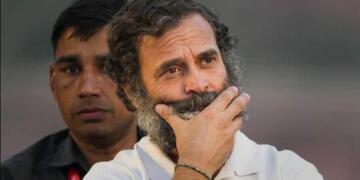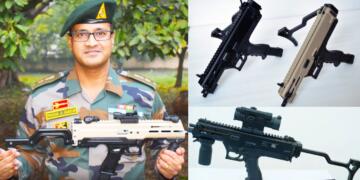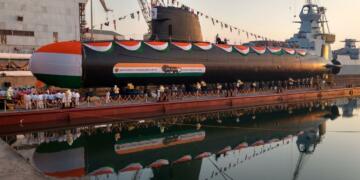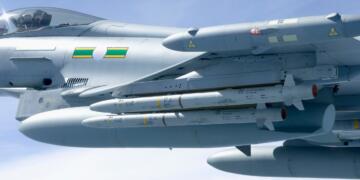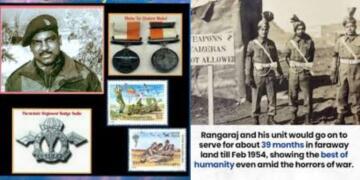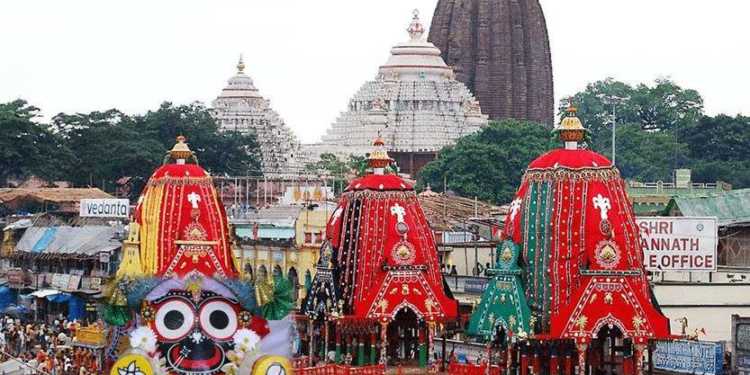ଜଗନ୍ନାଥ: ସ୍ୱାମୀ ନୟନପଥ–ଗାମୀ ଭବତୁ ମେ ।।
जगन्नाथ: स्वामी नयनपथ–गामी भवतु मे।।
Jagannatha: Swami NayanPath-Gami Bhavatu Me ।।
ITIHASA of Jagannatha Mahaprabhu (A Brief History)
Jagannatha Mahaprabhu is Bhagwan Vishnu’s Avatara
King Indradyumna, of Avanti (Malava) (Central India) was a great Bhakta (devotee) to Bhagwan Vishnu and wished to worship him in the perfect form. He had a divine communication in his dreams that he can see Bhagwan Vishnu in form of Nila Madhava (MURTI made of Rocky Stone) in dense forests of Utkala (ancient Odisha). He asked Vidyapati, the brother of the royal priest of Malava to find out the place where he can worship Vishnu. Vidyapati visited Utkala and came to know that Vishnu was worshipped as Nila Madhava by Visvavasu, King of Sabara Tribe in Utkala somewhere on a hill in a dense forest (Some ancient scriptures and texts mention Vidyapati as Senapati “Head of Soldiers” of King Indradyumna”)
Visvavasu denied Vidyapati to show him the place of his worship. Vidyapati married Lalita (daughter of Visvavasu). And on request of his daughter, Visvavasu agreed to show the place of worship of Nila Madhava to Vidyapati and took his son-in-law to the place of worship blind folded. Vidyapati on his way to the forest had dropped mustard seeds so that he could find his way later
But when Indradyumna reached this holy land Nila Madhava had miraculously disappeared and was astonished to see giant image of Bhagwan Jagnya Nrushingha “Avatara of Bhagwan Vishnu” in that place. As per advice of the Rishi Narada, the King started worshiping Bhagwan Nrushingha in a temple. But soon he went again into a deep state of sorrow for not being to worship Bhagwan Vishnu in form of Nila Madhava
He again received a divine direction to incarnate Jagannatha Mahaprabhu (Vishnu’s Avatar) from a log of wood floating on the shores of Puri. As per divine directions log of wood (which had prominent symbols of Sankha, Chakra, Gada, Padma and Hala mushala) on it was brought from the sea shores of Puri to ADAPA Mandapa near JAGNYA Mandapa
The wood was ready to be incarnated into Jagannatha Mahaprabhu’s, but there was no carpenter who could completely fabricate Vishnu into this Avatar as none of them had ever seen Vishnu. Lastly, Bhagwan Vishwakarma appeared before King Indradyumna in disguise of Ananta Maharana and convinced the King that he could complete this duty but with a condition that he should be allowed to remain in a closed room with the log of wood for long twenty one days to do the needful
And work started but after 15 days Gundicha, the Queen persuaded the King to open the door as she couldn’t hear any noise of carpentry and she was worried about the well-being of the carpenter. Thus, when the door was opened at the King’s command, no trace of the Ananta Maharana could be found and all that could be seen was a set of four wooden images in incomplete form, i.e., the form in which we worship (today) the images of Jagannatha Mahaprabhu, Bhagwan Balabhadra, Devi Subhadra and Sudarsana Chakra (which represents the divine symbol of Bhagwan Vishnu and the Supreme luminescence of Jagannatha Mahaprabhu). This Mandira was known as Gundicha Mandira going ahead where ADAPA Mandapa is there.
Jagannatha Mahaprabhu, Bhagwan Balabhadra, Devi Subhadra are are considered to be the forms and manifestations of the omni-present, omni-scient and omni-potent supreme power. Sudarsana Chakra which is supposed to be the fourth important divine manifestation is also worshipped with the celebrated trio and these four are known as the Chaturddhamurti or the four-fold divine images
For the Pratistha “Installation” of the Chaturddhamurti in Shree Mandira, King Indradyumna along with Rishi NARADA proceeded to Heaven to invite Bhagwan Brahma for doing the Pratistha Ceremony as the main priest. Bhagwan Brahma came and completed the Pratistha Ceremony and the Chaturddhamurti was placed on Ratna Shinghasana in Shree Mandira (Fig. 1). After the Pratistha of the Chaturddharmurti’s, King Indradyumna started the festivals of Ratha Yatra from Deva Snana Purnima to Sri Gundicha Ratha Yatra.

We associate Puri Mandira (temple) not only with the Devas and Devis presiding therein, but also cultural heritage associated with Shree Keshtra (Shree Mandira and all other small Mandira’s within the campus) which inspire the Bhakta’s / pilgrims to attain peace of mind. Shree Keshtra has been built in the shape of SHANKHA (which is a conch shell of ritual and religious importance in Hinduism). So, Shree Keshtra is also known as SHANKHA Keshtra. Hence the Jagannatha Dharma has to be understood, interpreted and appreciated with all its social, cultural, religious and spiritual implications. The main Mandira in Puri is surrounded by about 30 Mandira’s. Plenty of Sanskrit scholars/writers/singers have written about the glories of Jagannatha Mahaprabhu and Shree Keshtra since Rig Veda era. The Puranas (Skanda, Brahma & Narada) present elaborate accounts pertaining to the origin of Jagannatha in an atmosphere of mystery and divine inspiration
Jagannatha represents an integration of all important Hindu cultures which flourished in India, namely, the Vedic, the Puranic, the Tantric, the Smarta and the Vaisnava. Jagannatha Mahaprabhu is worshipped as Narayan or Vishnu when he is on the Ratnavedi (dias) in the sanctum sanctorum, as Ganesha when on the, Snanavedi during the SnanaPurnima, as Rudra (an expression of Shiva) during the Nava- Kalevara ceremony, as Durga in the Sayana festival and as the Sun when on the Ratha during the Ratha Yatra “Car festival”
The descendants ‘of both Viswavasu and Vidyapati discharge the most important Vidhi of the Mandira. They are known as Daita-Pati i.e. descendants of Viswavasu and Vidyapati. Daita-Pati’s especially perform all the Vidhis from Deva Snana Purnima till end of Ratha Yatra i.e. Niladri Bije

Also, there goes a saying “In Puri, there is no caste system” i.e. in Shree Mandira (other name of Puri Mandira) people from various castes like sweepers, washer man, etc. are not only allowed entry but also these castes discharge certain specific duties and services for the performance of some traditional rites for Jagannatha Mahaprabhu. The Mahaprasada (Fig. 2) (the offerings to the Chaturddhamurti in the Shree Mandira) is a wonder of the Hindu world in as much as it is free from any kind of discrimination pertaining to the castes of India. Persons of all castes do partake Mahaprasada from the same plate without the least hesitation. Thus, the glory and greatness of Jagannatha Mahaprabhu may be brought out in the following manner.
Adi Sankaracharya visited Puri in 9th Century A.D. and founded the Govardhana Matha as the eastern dhama of India. Puri is out of four DHAMA of India. It is the traditional belief that a Hindu should visit these four DHAMAS at least once in his life and the prevailing practice is that, after visiting the other three DHAMAS, one must visit Puri DHAMA
The ritual system of the Mandira is very elaborate and scientific in nature managed by a multitude of functionaries above one thousand spread over one hundred categories. The rituals of Jagannatha can broadly be divided into three parts – the daily, the occasional and the festive. In Jagannatha Mandira these rituals assume the term ‘Niti’. Each sevaka or the Mandira functionary has his specified duty to perform in these Niti’s having terms and times specified. Unless, a particular Niti is performed, the next one can’t take place and consequently punctuality sometimes fluctuates to ensure attendance of various categories of sevakas required for a particular Niti
Festivals of Jagannatha Mahaprabhu (Deva Snana Purnima to Sri Gundicha Ratha Yatra)
Deva Snana Purnima
“Snana gundicha ae swam beni lila jara
Patitapabana arthu prasadu bahara”
Deva Snana Purnima is an auspicious bath ceremony of Jagannatha Mahaprabhu which is celebrated on the Purnima i.e. full moon day of Hindu Calendar month Jyestha to memorialize appearance of Chaturddhamurti (Jagannatha Mahaprabhu, Bhagwan Balabhadra, Devi Subhadra and Sudarsana Chakra). As per Skanda Purana Raja Indradyumna arranged for this bathing ceremony on Purnima day of Jyestha month and since then it has been celebrated as Deva Snana Purnima (Fig. 3) since centuries. This auspicious festival is not limited to Shree Mandira but is celebrated at all Jagannatha Mandirs all over India and world.

On the previous day of Snana Yatra (as it also known as) MURTIS of Jagannatha Mahaprabhu, Bhagwan Balabhadra, Devi Subhadra and Sudarsana Chakra are ceremonially brought out in a procession to the Snana-vedi (Snana Mandap) which is situated near the northern gate of Shree Mandira. The Snana Mandap has been brilliantly built so that Bhakta’s of Jagannatha Mahaprabhu even standing in Shree Keshtra can easily see the Chaturddhamurti’s
Chaturddhamurti’s are bathed by 108 gold vessels (Jagannatha Mahaprabhu – 35, Bhagwan Balabhadra – 33, Devi Subhadra –22 and Sudarsana Chakra – 18) filled up with water brought from Suna Kua ‘the Golden Well’ situated inside Shree Mandira. This Vidhhi “Ritual” is known as JALABHISHEK (JALA – water, Abhishek – bath). The filled vessels are carried by the Suaras/Daitapatis in a long single-line procession. This Vidhi is called ‘JALADHIBASA’
After JALABHISHEK, Jagannatha Mahaprabhu and Bhagwan Balabhadra are dressed like Bhagwan Ganesha with head of elephant and Devi Subhadra wears Lotus Flower as MUKUTA. This form is known as GAJANANA Besha (Fig. 4)

As per ITIHASA, it is believed one of the renowned scholars and also a loyal Bhakta of Bhagwan Ganesha visited Puri centuries ago. Respecting his knowledge the then King of Kalinga rewarded him for his scholarship and requested him to visit Shree Keshtra to pray to Jagannatha Mahaprabhu. The scholar refused to visit citing the reason he wouldn’t worship any form of Bhagwan other than Ganesha. But the King of Kalinga however persuaded him and brought him to Snana Mandapa. Jagannatha Mahaprabhu appeared in form of Bhagwan Ganesha and since, then after the JALABHISHEK Vidhhi “Ritual” the divinities are dressed in the form of GAJANANA Besha
This costume is offered by Gopaltirtha Matha & Raghavdas Matha. This besha is especially dedicated to the famous Gananpati Bhatta
After the JALABHISHEK, Chaturddhamurti’s are kept away from their Bhakta’s for 15 days in Ratna Vedi (sickroom) situated inside the Shree Mandira. This short period is also known as “Anabasara Kala” and Shree Mandira remains closed.
During this Anabasar Kala Bhakta’s visit Alarnath Thakur “Avatara of Shri Krishna” at Brahmagiri in Puri District. As per ITIHASA, it is believed that Jagannatha Mahaprabhu had advised his Bhakta’s for this short period he will give Darshan to them in the Avatara of Alarnath Thakur.
On the 16th Day Chaturddhamurti’s become ready for darshan to the Bhakta’s on Navajaubana Darshan. Netrotsava is also observed on that day
Ratha Yatra (Sri Gundicha Ratha Yatra)
Ratha Yatra (Fig. 5) is the festival which signifies how Chaturddhamurti (Jagannatha Mahaprabhu, Bhagwan Balabhadra, Devi Subhadra and Sudarsana Chakra) come out of Shree Mandira to meet their Bhakta’s. The world famous Ratha Yatra of Jagannatha Mahaprabhu is celebrated from ‘AshadhaShukla Dwitiya Tithi’ -i.e. the 2nd day and ends on Ashadha Shukla Dashami Tithi i.e. 10th day of the bright fort-night Ashadha Hindu month (June- July) every year. The Ratha Yatra is also known as Sri Gundicha Ratha Yatra after Queen Gundicha who started the festival (Gundicha was Queen of King Indradyumna)

Several years ago, there flowed a river between Bada Deula (Shree Mandira) and Gundicha Mandira called Malini, a tributary of the Bhargavi. Therefore, six Ratha’s (Chariots) were used for the festival, three on each side of the channel. Saradha Devi, the wife of then Puri king Gajapati Narasingh Dev, dreamt of Jagannatha Mahaprabhu ordering her to have a single yatra without any stop. Consequently, she had the mouth of the river Malini closed and the river was filled with sand. This closed mouth is now called Banki Muhana and since then, the place has been known as Saradha Setu or Saradha Bali
The Ratha’s (Chariots)
Before going to festival, let’s know about the three Ratha’s (Chariots) of Jagannatha Mahaprabhu, Bhagwan Balabhadra, and Devi Subhadra. The three Ratha’s (Chariots) are newly constructed every year with wood of specified trees customarily brought from the ex-princely state of Dasapalla, by a specialist team of carpenters who have hereditary rights and privilege for the same.
Jagannatha Mahaprabhu’s Ratha is known as Nandighosa and is 45’6” (45 feet 6 inches) high. It has sixteen wheels and is decked with a cover made of red and yellow cloth
Bhagwan Balabhadra’s Ratha is known as Taladhwaja, the one with the Palm Tree on its flag, has fourteen wheels and is covered with red and green cloth. Its height is 45’ feet
Devi Subhadra’s Ratha is known as Darpadalana (Devadalana) and is 44’6” (44 feet 6 inches) high with twelve wheels. This Ratha is decked with a covering of red and black cloth, black being traditionally associated with Shakti and the Mother goddess
Names of the ropes used for the Ratha’s are known as Sankha Chuda (Nandighosa), Basukhi (Taladhwaja) and Subarnachuda (Darpadalana). Flag hoisted on the top of the Ratha’s are known as Troilakyamohini (Nandighosa), Unani (Taladhwaja)) and Nadambika (Darpadalana)
Around each of the Ratha’s are nine Parsva devatas, painted wooden images representing different Murtis on the Ratha’s (Chariots’) sides. Each of the Ratha’s is attached with four horses. These are of different colours – white ones for Jagannatha, dark ones for Balabhadra and red (reddish brown i.e. shade of brown) ones for Subhadra. Each Ratha’s has a charioteer called Sarathi. The three Sarathi’s attached to the Ratha’s of Jagannatha, Balabhadra and Subhadra respectively are Daruka, Matali and Arjuna
Ritual of Pahandi Bije
On the day of Ratha Yatra, Chaturddhamurti (Jagannatha Mahaprabhu, Bhagwan Balabhadra, Devi Subhadra and Sudarsana Chakra) are taken in a procession to the three Ratha’s present at Bada Danda in front of SinghaDwara. This is known as “Pahandi Bije” (Fig. 6)
At the outset Sudarsana Chakra is brought out first in the Pahandi and then seated in Darpadalan Ratha of Devi Subhadra ahead of Jagannatha Mahaprabhu, Bhagwan Balabhadra, and Devi Subhadra. Then Bhagwan Balabhadra is taken to Taladhwaja Ratha, followed by Devi Subhadra to Darpadalan Ratha and at the last Jagannatha Mahaprabhu is taken to Nandighosa Ratha. This Pahandi procession of Murtis in a row is known as “Dhadi Pahandi” or a group movement.
Ritual of Chhera Pahanra
The second phase of the festival is an equally colourful and elaborate ritual is known as Chhera Pahanra (Fig. 7) which is done by the King Gajapati Maharaja of Puri. After all the Murtis are placed on the Ratha’s, the present King Gajapati Maharaja Dibya Singh Deb-4 is informed. The King, clad in spotless white, carried in a silver plated palanquin leaves his palace and comes in a small procession on the grand avenue led by a caparisoned elephant. He climbs the Ratha’s one by one. He first offers his prayer to the Chaturddhamurti’s seated on the Ratha’s. He then cleans the platforms with a golden broom, sprinkling flowers and sandalwood water on the surface of the Ratha. This custom show cases that in the eyes of Jagannatha Mahaprabhu every Bhakta is equal, be it King or a common man

The ritual goes back several hundred years and is a symbol of the subjugation of the temporal to the spiritual. The emperors of Kalinga, beginning with the valiant Anantvarman Chodagangadeva in the 12th century, had declared themselves to be the rauta, servant of Jagannatha Mahaprabhu and ruled the land as his representative. The ritual is also a public demonstration of the unique philosophy of integration and unity symbolised by Jagannatha Mahaprabhu. There is no distinction of caste, creed or any other barrier during the entire festivities.
This ritual is conducted on the day of Bahuda Yatra i.e. return journey of Chaturddhamurti’s to Bada Danda from Gundicha Mandira
Pulling of Ratha’s to Gundicha Mandira
After Chhera Pahanra, all the three Ratha’s are driven to Gundicha Mandira. Bhagwan Balabhadra’s Ratha, Taladhwaja is driven by Bhakta’s first followed by Devi Subhadra’s Ratha, Darpadalana and at the last Jagannatha Mahaprabhu’s Ratha, Nandighosa is driven. On the way to Gundicha Mandira the Ratha’s stop at their maternal aunt’s place i.e. at Mausi Maa Mandira where the Murtis are offered “PODA PITHA”
Then Chaturddhamurti go to Gundicha Mandira where they stay for 9 days in ADAPA Mandapa (Janm Bedi) and worshipped by the Daita-Pati’s and the Bhakta’s visit this Mandira to take divine blessings of Jagannatha Mahaprabhu, Bhagwan Balabhadra, Devi Subhadra and Sudarsana Chakra
Rituals at Gundicha Mandira
Apart from regular Puja of the Chaturddhamurti’s, one special ritual is observed on the 5th Day of Ratha Yatra i.e. on Ashadha Shukla Shasthi Tithi and is known as “Hera Panchami” (Fig. 8). On this day Devi Mahalakshmi, wife of Jagannatha Mahaprabhu comes to Gundicha Temple searching for her husband. She requests him to come back to the temple at the earliest. To please her, Jagannatha Mahaprabhu concedes to her by offering her agyan mala (a garland of consent). Seeing the Goddess furious, the sevakas close the main door of the Gundicha Mandira

Devi Mahalaxmi returns to the main temple with a heavy heart through the Nakachana gate. In a unique ritual, the Goddess orders one of her attendants to damage a part of the Nandighosa Ratha. This is followed by her hiding behind a tamarind tree outside the Gundicha Mandira. After some time, she escapes to her home temple in secrecy, through a separate path way known as Hera Gohri Sahi. The unique ritual is enjoyed by lakhs of devotees of Jagannatha Mahaprabhu
Bahuda Yatra
On the 9th Day i.e. on Ashada Shukla Dashami, Chaturddhamurti start their journey back to Bada Danda from Gundicha Mandira. Murti’s of Jagannatha Mahaprabhu, Bhagwan Balabhadra, Devi Subhadra and Sudarsana Chakra are again brought in a procession to the Ratha’s at a time in a series way called “Dhadi Pahandi”. Like Chehra Pahanra, King Gajapati Maharaja Dibya Singh Deb-4 performs the ritual again
Then the three Ratha’s are driven back to Bada Danda. At this time also Bhagwan Balabhadra’s Ratha, Taladhwaja is driven by Bhakta’s first, followed by Devi Subhadra’s Ratha, Darpadalana and at the last Jagannatha Mahaprabhu’s Ratha, Nandighosa is driven.This return journey of Chaturddhamurti from Gundicha Mandira to Bada Danda is known as “Bahuda Yatra” (Fig. 9)

Rituals performed before Chaturddhamurti returns to the Shree Mandira
SUNA BESA
It is observed on the next day of Bahuda Yatra i.e. on Ekadashi Tithi. This Ekadashi is known as Bada Ekadashi and it’s one of the four Bada Ekadashi’s which is observed in a Hindu Calendar year. SUNA BESA is the ritual in which Jagannatha Mahaprabhu, Bhagwan Balabhadra and Devi Subhadra are adorned with beautiful gold ornaments on the Ratha’s. This SUNA BESA (Fig. 10) which is observed during Ratha Yatra is also known as RAJADHIRAJA BESA

The other SUNA BESA’s are observed on auspicious occasions i.e. Dola Purnima (during Holi March), Dashahara (Vijyadashami) (October), Karthik Purnima (November), and Pousa Purnima (December) in Ratna Singhasana inside Shree Mandira
The ornaments of SUNA BESA includes golden crown, gold peacock, feather, gold necklace, silver Sankha, etc. weighing around 100 Kgs in total. The ornaments are around 138 types of different styles which includes hasta (hand); payar (feet); mukuta (tiara or large crown); mayur chandrika, a peacock feather design which was used as head decoration by Bhagwan Krishna; chulapati (a forehead costume which highlights facial beauty); kundal (hanging ear-rings); rahurekha, a half square shaped decorative adorned across the face of the deity; malas or necklaces of various types such as padam (lotus), sevati (small sun flower), agasti in the shape of moon flower; in a kadamba flower shape, kante (large gold beads), mayoor in the form of peacock feathers, and champa, a yellow flower; Sri Chita representing the third eye of the deities; chakra or wheel; gada or mace; padma a lotus flower; and SHANKH or conch
Jagannath Mahaprabhu is adorned with a Chakra (disc) made of gold on the right hand while a silver Sankha (conch) adorns the left hand. However, Bhagwan Balabhadra is decorated with a plough made of gold on the left hand while a golden mace adorns his right hand. Devi Subhadra’s forehead is decorated with an emerald (panna)
ADHARA PANA Niti
ADHARA PANA Niti is observed on next day of SUNA BESA i.e. Dwadasi Tithi over the Ratha’s. As per traditions nine large open mouth barrel shaped clay pitchers will be placed in front of the MURTIS of Jagannatha Mahaprabhu, Bhagwan Balabhadra and Devi Subhadra touching their lips (3 on each Ratha). The Daita-Pati’s offer the ADHARA PANA (Fig. 11) in the pitchers to Jagannatha Mahaprabhu, Bhagwan Balabhadra and Devi Subhadra at late in the night after performing Sodasha Upachara Pooja. As per traditions, after offerings it the pitchers will be smashed on the Ratha’s spilling the entire drink on the platform of the Ratha’s

It is believed that numerous spirits, ghostly bodies and souls who trail Bhagwan and Bhagwati during Ratha Yatra eagerly wait for this moment to get Mokshya by drinking the holy drink. All the Bhakta’s also try to collect this in small earthen pots from the Ratha’s
NILADRI BIJE
NILADRI BIJE is the welcome festival or return of Chaturddhamurti’s (Jagannatha Mahaprabhu, Bhagwan Balabhadra, Devi Subhadra and Sudarsana Chakra) to Ratna Singhasana of Shree Mandira. This is observed on Asadha’s Shukla Pakshya Trayodashi Tithi which concludes the Sri Gundicha Ratha Yatra
As per traditions, on this day at night Bhagwan Balabhadra and Devi Subhadra are easily allowed to enter and take Ratna Singhasana while Jagannatha Mahaprabhu finds himself obstructed at Singha Dwara and Jaya Bijay Dwara as Devi Mahalakshmi is upset. Jagannatha Mahaprabhu offers sweet dish i.e. RASGULLA to the Devi Mahalakshmi and he is allowed to enter. Finally, Jagannatha Mahaprabhu returns to Ratna Singhasana. During this Niladri Bije Vidhi, Chaturddhamurti’s returns to Ratna Singhasana in Goti Pahandi procession (Goti means one after other)
With the return of Chaturddhamurti’s (Jagannatha Mahaprabhu, Bhagwan Balabhadra, Devi Subhadra and Sudarsana Chakra) to Ratna Singhasana of Shree Mandira the grand festival of Sri Gundicha Ratha Yatra concludes (Fig. 12)

Ratha Yatra of Dwitiya Shree Keshtra (Second Shree Keshtra-Puri) “Baripada”
Baripada hosts the second most popular Ratha Yatra of Odisha after Puri and so, is known as Dwitiya Shree Keshtra (Second Shree Keshtra -Puri). Baripada’s Ratha Yatra (Fig. 13) is popular for its unique culture, pulling of the Ratha of Devi Subhadra, only by the women. The women can be seen in all vigor and spirit, pulling the Ratha

Ratha Yatra in Baripada comprises of the following schedule in general-Netra Utsav (Ashadha Krushna Amabasya), Uvayatra (Ashadha Shukla Pratipada), Pahandi (Gundicha at Puri) (Ashadha Shukla Dwitiya), Pulling of Ratha’s (Ashadha Trutiya & Chaturthi), Bahuda Yatra & Pahandi (Ashadha Shukla Ekadashi), Pulling of Bahuda Ratha’s (Ashadha Dwadashi & Trayodasi)
Tri Murtis of Jagannatha Mahaprabhu, Bhagwan Balabhadra and Devi Subhadra arrive on the respective Ratha’s after ‘Pahandi’. The pulling of the Ratha’s begins the next day at about 2:30PM and continues until 5:30PM. The 14-wheeled ‘Taldhwaja’ (the Ratha of Bhagwan Balabhadra) moves first and reaches the ‘Mausi-Maa’ i.e. ‘Radha Mohan’ Mandir. Thereafter 12-wheeled ‘Devadalan’or ‘Vijaya’(Ratha of Devi Shubhadra) is pulled only by ladies. Normally this Ratha reaches half-way and stops near the town police station. Till this time, the evening arrives and so the pulling of Ratha’s is stopped as per tradition
Next day at about 2:30 P.M the pulling of Ratha’s is resumed and ‘Devadalan’ reaches the destination, the Mausi-Maa temple. Then starts the “Nandighosh”(the massive Ratha with 16 Wheels-largest of the three-of Jagannatha Mahaprabhu). With the accompaniment of resounding Sankha shells “Ghantas”, the Ratha covers the distance majestically swaying both ways. When the Ratha’s reach Gundicha temple, jaggery laddoos are thrown to the frenzied crowd that jostle for a grain of sacred Prasad.
On “Bahuda” Day, observed on Ashadha Shukla Ekadashi tithi, the same rituals of Pahandi are performed and Ratha’s pulling is completed again in two days. As there is no space for the Ratha’s to move around, the reverse sequence is followed in the return journey-First starts “Nandighosh”, then Devadalan and then the “Taladhwaja”. Then the 3 Ratha’s arrive at the Bada-danda
Tri Murtis of Jagannatha Mahaprabhu, Bhagwan Balabhadra and Devi Subhadra give darshan to the Bhakta’s till the next evening, followed by the Pahandi Bije when they return inside the temple
Ratha Yatra of Tulasi Keshtra “Baladevjew Mandira” “Kedarapada”
Baladevjew Temple is situated in Ichhapur (Tulasi Keshtra), Kendrapara, Odisha. Baladevjew Temple is a very famous temple of Odisha and Baladevjew (Balabhadra) is its main divinity. Jagannatha and Devi Subhadra are also worshipped in the Ratna Sinhasan in the main temple. A MURTI representing TULASI as a Devi in a seated position is also present after the sacred seven steps
The Ratha Yatra here is famous for the Brahma Taladhwaja Ratha i.e. Ratha Yatra of Bhagwan Baladev Jee. (Fig. 14) This is the biggest Ratha in the world (about 72 Feet High). Every year, some parts of the Ratha are built anew unlike the Ratha’s of Puri Ratha Yatra which are made fresh every year. When it rolls, it seems like a Temple on the Wheels. It has 14 wheels which signify the 14 universes (bramhanda). It has four horses Teevra, Ghora, Dirghashrama and Swarnanabha. Rope of the Ratha is known as Vasuki and the covering of the Ratha is of seven colours with Bhagwan Garuda and Bhagwan Hanuman inscribed in the front of the Ratha

Ratha Yatra here is observed for two days in Kendrapada. As per tradition, rituals are observed on AshadhaShukla Dwitiya Tithi and the Brahma Taladhwaja Ratha is majorly pulled on the next day i.e. Tritya Tithi (like Dwitiya Shree Keshtra Baripada’s Ratha Yatra) and reaches the Gundicha Mandira
ନୀଳାଦ୍ରୌ ଶଙ୍ଖମଧ୍ୟେ ଶତଦଳକମଳେ ରତ୍ନସିଂହାସନସ୍ଥ˚ ।
ସର୍ବାଳଙ୍କାରଯୁକ୍ତ˚ ନବଘନରୁଚିର˚ ସଂଯୁତ˚ ଚାଗ୍ରଜେନ ।।
ଭଦ୍ରାୟା ବାମଭାଗେ ରଥଚରଣଯୁତଂ ବ୍ରହ୍ମ୍ରରୁଦ୍ର˚ଦ୍ର ବନ୍ଦ୍ୟ˚।
ବେଦାନା˚ ସାରମୀଶଂ ସ୍ଵଜନପରିବୃତ˚ ବ୍ରହ୍ମଦାରୁ˚ ଭଜେଽହମ୍ ।।
This article could not have been possible without the significant inputs and generosity of my parents (Kunja Bihari Mohanty & Damini Manjari Dev Goswami) and uncle (Laxmi Narayan Mohanty)
References/Sources:
- Utkal Prasanga (Monthly Odia Magazine published by Odisha Govt.)
- Odia newspaper – Prameya
- http://jagannath.nic.in/?q=home
- orissa.gov.in
- http://rathjatra.nic.in/about.htm
- http://www.nabakalebara.gov.in/
- http://www.rathyatra.org/devasnana-purnima.html
- OTV News
- http://www.nabakalebara.gov.in/newsDetails/In-News/134
- http://baripadarathyatra.in/about-rathyatra/
- http://kendrapara.nic.in/Mainpage/About%20Sri%20Sri%20Baladev%20Jew%20Temple.html
- https://en.wikipedia.org/wiki/Baladevjew_Temple
- http://odishachannel.com/index.php/4857/bahuda-yatra-held-at-tulasi-kshetra/
- Images


